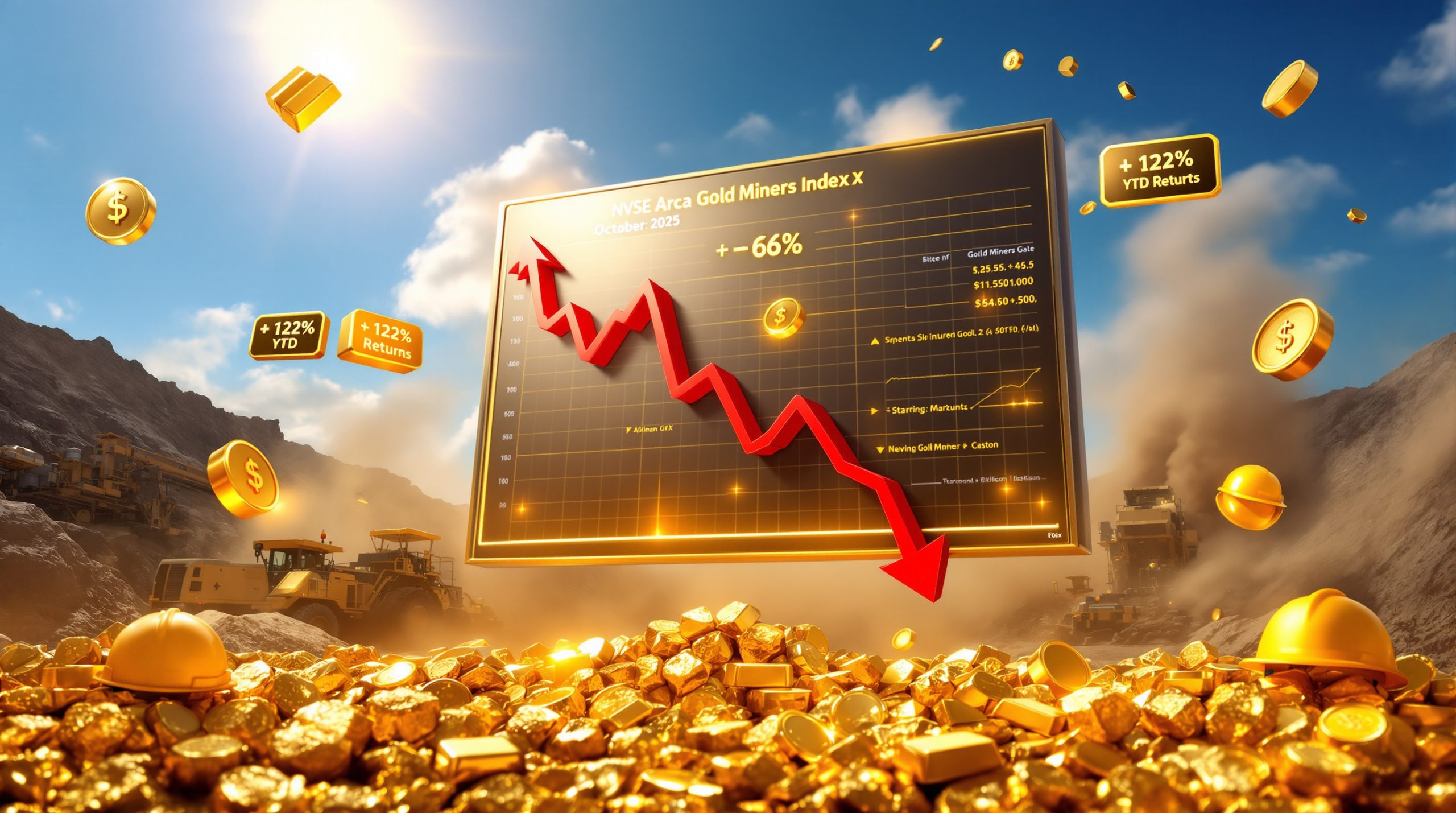What Caused Gold to Hit $35,000?
Gold's dramatic rise to $35,000 wasn't a typical bull run but rather a profound signal of systemic revaluation across global financial markets. This extraordinary price movement represents more than just market dynamics—it reflects a fundamental reaction to perceived failures in the established financial system. Unlike traditional market rallies driven by growth or optimism, the spike indicates a global reassessment of trust in the very structures that underpin our economic system.
The remarkable ascent wasn't triggered by conventional market factors like inflation fears or currency depreciation alone. Instead, it emerged from widening cracks in the global economic architecture—a manifestation of what market analysts describe as a "sudden repricing of safety" amid declining trust in previously reliable financial institutions. This movement represents not a speculative bubble but rather a structural reset indicating a "silent abandonment of faith" in systems that were once considered unshakeable.
The Real Message Behind the Price Spike
The gold price surge to $35,000 carries profound implications beyond mere investment returns. This movement represents a silent referendum on the credibility of central banks, governments, and the financial system at large. When institutional players shift substantial assets into physical gold, they're effectively voting with their capital—expressing diminishing confidence in the traditional "rules of the game."
What makes this particular surge different from historical gold rallies is the participation of sophisticated institutional investors rather than just retail panic. Central banks have purchased over 1,000 tons of gold annually for three consecutive years—an unprecedented accumulation pattern that signals deep, structural concerns rather than tactical portfolio adjustments.
Beyond Traditional Price Mechanics
The most revealing aspect of gold's dramatic revaluation is how it defied established market correlations. Traditional wisdom holds that gold prices should fall when real yields rise, yet during 2023-2024, real yields soared while gold's exceptional rise broke records. This fundamental breakdown of historical price relationships signals something far more significant than a typical market cycle—it represents a reappraisal of foundational financial relationships.
As JP Morgan analysts have noted, the dollar appears approximately 10-15% overvalued based on long-term real exchange rate metrics. This overvaluation, combined with ballooning deficits and increasingly interventionist Federal Reserve policies, has created the perfect conditions for a substantial reallocation toward gold as a politically neutral reserve asset.
Is It Too Late to Invest in Gold?
For many investors watching gold's meteoric rise, the natural question becomes: "Have I missed the opportunity?" Rather than marking the end of a cycle, current market conditions represent what seasoned gold investors describe as "the most important opportunity to date in a decade." The price movement indicates the beginning of a structural reset, not its conclusion.
Those questioning if they've missed the boat are actually witnessing the early stages of a fundamental revaluation. While early adopters have already positioned themselves advantageously, several key indicators suggest we remain in the preliminary phases of a much larger transition.
The Window of Opportunity
A critical metric that gold analysts monitor is the gold-silver ratio, which recently hovered near 100:1—a level typically observed during the early stages of major precious metals moves. Historically, this ratio compresses substantially as bull markets mature, suggesting considerable runway remains in the current cycle.
Additionally, mining stocks have remained surprisingly subdued despite physical gold's dramatic rise. This divergence between physical metal and mining shares typically resolves with mining stocks playing catch-up in the intermediate stages of precious metals bull markets, offering potentially lucrative opportunities for those who haven't yet established positions.
Signs That We're Still Early in the Cycle
Perhaps the most compelling evidence that the gold and the financial system reset remains in its early phases is the relative absence of silver participation. Historically, silver confirms and amplifies gold bull markets in their middle and later stages, yet silver has significantly lagged gold's performance thus far. This divergence isn't a negative signal—rather, it's a textbook indicator that we're witnessing the opening acts of a much longer financial drama.
The current market structure also reveals limited participation from discretionary institutional investors and mainstream retail buyers. Central banks and sovereign wealth funds have dominated accumulation thus far, leaving substantial demand potential untapped as broader institutional and retail participation inevitably follows.
The Dollar's Vulnerability and Central Bank Response
The extraordinary movement in gold prices cannot be fully understood without examining the increasingly precarious position of the US dollar. Despite its continued status as the world's reserve currency, structural pressures have placed the dollar in an increasingly vulnerable position.
The Overvalued Dollar
According to JP Morgan's long-term real exchange rate models, the dollar currently trades approximately 10-15% above its fundamental value. This overvaluation persists despite ballooning fiscal deficits, unprecedented Federal Reserve balance sheet expansion, and increasingly contentious trade policies that have strained international economic relationships.
The dollar's reserve currency status—once considered an unassailable advantage—increasingly resembles what currency strategists describe as an "overstretched brand." Nations that once unquestioningly held dollars as their primary reserve asset have begun systematically diversifying, with gold functioning as the primary beneficiary of this strategic reallocation.
Central Banks' Strategic Pivot
Central bank behavior regarding gold has fundamentally changed over the past three years. These institutions have collectively purchased over 1,000 tons annually for three consecutive years—a buying pace unseen in modern financial history. According to HSBC's reserve manager survey, more than one-third of global central banks plan to increase their gold ETFs strategies and holdings further, signaling continued strong institutional demand.
Perhaps most tellingly, over 50% of central banks have already intervened in foreign exchange markets this year, reflecting growing discomfort with currency volatility and structural imbalances. In this environment of heightened financial uncertainty, gold has increasingly been embraced as "the last politically neutral asset" in an era where financial warfare has become commonplace.
Why Traditional Gold Price Metrics No Longer Apply
One of the most striking aspects of gold's recent performance has been its complete decoupling from traditional pricing metrics. Under normal circumstances, gold prices typically decline when real yields rise—yet we've witnessed precisely the opposite relationship over the past 18 months.
The Breakdown of Historical Correlations
In 2023, real yields soared to multi-year highs, a condition that historically would have crushed gold prices. Yet gold gained value throughout this period. This anomalous relationship intensified in 2024, with real yields remaining elevated while gold simultaneously broke all-time records. This deviation from expected patterns represents a profound "reappraisal" of fundamental financial relationships that have guided markets for decades.
The breakdown of these traditional correlations signals something far more significant than a typical market cycle. It indicates a structural shift in how the financial system values assets, particularly those perceived as existing outside the conventional banking system.
What's Actually Driving Gold's Movement
Contrary to popular narratives, gold's dramatic rise hasn't been fueled primarily by retail fear or inflation concerns. Rather, institutional panic—a profound sense of unease among the world's most sophisticated financial players—has driven the extraordinary price action. This isn't merely about inflation but rather about what market strategists describe as "institutional abdication" of long-held responsibilities.
Gold spikes because there are "no adults in the room"—a leadership vacuum in global finance where previously respected institutions have lost credibility through policy inconsistency, political capture, and short-term thinking. This erosion of trust in institutional competence represents the true driving force behind gold's dramatic revaluation.
The IMF's Warning Signs and Global Economic Outlook
The International Monetary Fund's recent World Economic Outlook effectively acknowledges unprecedented systemic uncertainty facing the global economy. Growth projections have been consistently revised downward across developed and emerging economies alike, reflecting deteriorating fundamental conditions.
The International Monetary Fund's Concerning Assessment
Beyond headline growth figures, the IMF has documented the increasingly fragmented nature of the global commodities insights and trading system. Trade policy has become increasingly weaponized, breaking traditional economic alliances and creating new fault lines in the international economic order. The current economic playbook appears increasingly "outdated," with America "rerunning the 1930s tariff play" despite historical evidence of its damaging consequences.
These developments have created an environment where traditional economic models and policy prescriptions hold diminishing relevance. The gold market has responded to this uncertainty by reassessing gold's fundamental role as a stabilizing asset during periods of institutional failure.
Hedging Against Systemic Breakdown
In this environment, gold serves not merely as protection against inflation but against what market veterans describe as systemic "madness" and "insanity." It provides a hedge against a financial architecture increasingly dominated by "algorithms, egos, and well-expired ideologies" rather than sound economic principles.
Gold's recent price action reflects its expanding role as protection from both politically captured Western central banks and "strategically predatory" Eastern ones. In a world where institutional integrity has become increasingly scarce, gold's politically neutral status offers rare certainty amid proliferating uncertainties.
The Silent Signals in the Gold Market
Beyond headline price moves, subtle structural signals within the gold market provide crucial insights into the durability and future trajectory of the current bull market. The recent pullback after reaching $35,000 offers particularly valuable information about market internals.
What the Recent Pullback Really Means
The significant retracement following gold's surge to $35,000 represented a "short-term clearing of froth" rather than a "blowoff top" signaling the end of the bull market. Several key indicators remained remarkably stable during this pullback: central banks didn't sell their positions, ETF inflows didn't reverse direction, and discretionary institutional investors didn't pile in at the top—all signs of a healthy market consolidation rather than speculative exhaustion.
This technical behavior contrasts sharply with previous gold market tops, which typically featured emotional retail buying near peak prices. The current consolidation pattern suggests a market that remains well-supported by fundamental factors rather than speculative excess.
The Missing Silver Confirmation
One of the most telling indicators that gold's bull market remains in its early phases is the conspicuous absence of significant silver participation. Historically, silver confirms gold bull markets, typically delivering more explosive percentage gains in the intermediate and later stages. With the gold-silver ratio still near 100:1, the potential for substantial silver outperformance remains intact.
Market historians recognize silver's current absence as "a sign we're early not too late" in the precious metals cycle. When silver eventually catches up to gold's performance—a development that appears increasingly probable—it will likely signal the transition from early to intermediate stages of the broader precious metals bull market.
Physical Gold Ownership vs. Paper Assets
The distinction between physical gold ownership and paper gold exposure has never been more relevant than in the current environment of heightened financial uncertainty. Physical ownership offers unique attributes that become increasingly valuable during periods of systemic stress.
The Sovereignty of Physical Ownership
Physical gold "doesn't blink when the Wi-Fi drops"—a simple observation with profound implications during times of financial instability. The value of ownership that isn't "digital first" provides unique protection against technological vulnerabilities, counterparty risks, and potential restrictions on financial mobility.
Beyond mere wealth preservation, physical gold represents a form of financial sovereignty unavailable through conventional financial assets. It offers protection against account freezes, negative interest rates, bail-ins, and other policy tools that have become increasingly common in modern financial crisis management.
Effective Accumulation Strategy
For investors seeking to build physical gold positions, dollar-cost averaging offers a psychologically sustainable approach that removes emotion from purchasing decisions. By buying the same dollar amount at regular intervals regardless of price, investors naturally acquire more ounces during price dips and fewer during rallies—optimizing long-term accumulation without requiring market timing expertise.
This methodical approach to building physical holdings allows investors to construct positions in "something real" that's "unhypothecated, undebased, uncanceled"—attributes that become increasingly valuable during periods of financial stress when conventional assets often face unexpected restrictions or impairments.
Historical Context: Today's Crisis vs. Previous Gold Surges
To properly understand the current gold market environment, historical context provides essential perspective. Previous gold bull markets unfolded under markedly different leadership and institutional conditions.
The Leadership Vacuum
In 1971, when Nixon closed the gold window, gold prices soared—but the system adapted under competent leadership. In 1980, as inflation spiraled and gold hit new highs, Paul Volcker stepped in and restored credibility through decisive (if painful) policy actions. During the 2008 crisis, when the system cracked and gold surged, central banks provided massive liquidity while maintaining at least the appearance of institutional credibility.
The current environment features "no Volcker, no Bernanke, no Greenspan illusion"—it represents the first global financial crisis without a "credible adult in charge" capable of restoring confidence through decisive policy action. This leadership vacuum fundamentally alters the potential trajectory and magnitude of the current gold bull market.
Central Bank "Mutiny"
Current central bank gold buying represents something far more significant than routine diversification—it constitutes what currency strategists characterize as a "mutiny" against the dollar-centric monetary order. Nations are "stacking to opt out" and "build walls around their reserves," constructing alternative financial architecture where "gold backs trade" and "currencies are local but trust is universal."
In this evolving monetary landscape, the dollar is increasingly "tolerated not trusted"—a subtle but crucial distinction with profound implications for international finance. As central banks accelerate their accumulation of physical gold, they signal diminishing confidence in the stability and impartiality of the traditional reserve currency system.
What Should Retail Investors Do Now?
For individual investors navigating this complex and rapidly evolving financial landscape, several strategic principles offer valuable guidance regardless of short-term market fluctuations.
Reading the System's Signals
Rather than focusing exclusively on daily price movements, astute investors should pay attention to what the broader system is telling them through structural changes in market behavior. The breakdown of traditional correlations, the shift in central bank reserve management practices, and the increasing fragmentation of the global trading system all carry significant implications for portfolio construction.
Recognizing that "the old rules are gone" represents an essential first step in adapting to the emerging financial reality. Understanding that institutional players are executing a "slow-motion exit" from traditional assets provides valuable context for individual investment decisions.
The Risk of Waiting Too Long
Perhaps the greatest risk facing retail investors isn't buying too early but waiting too long. By the time gold feels like a "safe buy" to the average investor, physical metal could become scarce and difficult to acquire. As institutional demand intensifies, physical gold could become "locked down, repatriated, tokenized, gated behind premiums, restrictions, and excuses."
The wisest approach mirrors that of central banks, which "don't wait for the dip"—they secure strategic assets "before the risks show up in the headlines." By establishing positions methodically before mainstream recognition, individual investors can avoid the elevated premiums and potential availability constraints that typically characterize later stages of precious metals bull markets.
FAQ About Gold and the Financial Reset
What is the significance of gold hitting $35,000?
The $35,000 price point represents not just a market rally but a systemic revaluation reflecting currency dilution, political dysfunction, and economic denial. It signals a profound loss of faith in traditional financial structures rather than merely a typical bull market advance.
Why hasn't silver followed gold's dramatic rise?
Silver typically lags gold in the early stages of major bull markets. The current gold-silver ratio near 100:1 suggests we remain in the preliminary phases of the cycle, with substantial potential for explosive silver performance as the bull market matures.
How are central banks approaching gold differently now?
Central banks have purchased over 1,000 tons annually for three consecutive years, with more than one-third planning to increase holdings further. This represents not merely routine diversification but a strategic pivot away from dollar dependence toward politically neutral reserve assets.
What's the best strategy for retail investors to accumulate gold?
Dollar-cost averaging—buying the same amount regularly regardless of price—removes emotion from the equation and builds holdings systematically over time. This approach allows investors to acquire more ounces during price dips and avoid the psychological pitfalls of attempting to time market fluctuations.
How does today's gold market compare to previous historical surges?
Unlike previous gold bull markets in 1971, 1980, and 2008, today's market operates in an environment lacking the stabilizing presence of credible leadership. This represents the first global financial crisis without a "credible adult in charge" capable of restoring confidence through decisive policy action.
The gold market outlook 2025 suggests further structural changes as the gold and the financial system reset continues to unfold across global markets.
Ready to Discover the Next Big Gold Opportunity?
Don't miss out on the next major mineral discovery that could generate substantial returns. Visit Discovery Alert's dedicated discoveries page to explore how their proprietary Discovery IQ model delivers real-time alerts on significant ASX mineral discoveries, giving you an immediate market advantage.




